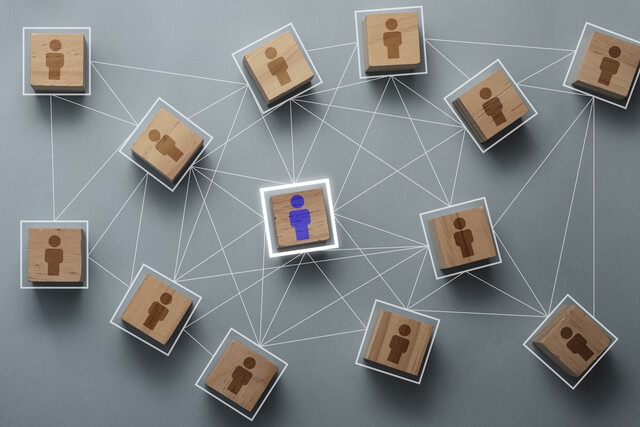Introduction
As a call center agent, you'll deal with a wide variety of customers, complaints, and situations. Some of them are humorous, some far from it. Call-center dilemmas can range from a simple complaint with an easy fix, to a complicated situation that may require extra time and effort to deal with. You'll also find yourself dealing, as we've mentioned before, with a wide variety of customers, personalities, and attitudes. In this article, we'll expose you to two types of customers that you may come across in your job as a call center agent.
You might be amazed at the things that can set customers off. Most of the time, customers are logical, but many are so enraged that it's often difficult to deal with them. Dealing with unruly customers is difficult, especially if the customer has called more than once to have a problem taken care of.
Janet - The Irate Customer - Case Study #1
John, a call center agent based in Omaha, had to deal with one such situation not long ago in his job. John is employed by a major department retail store. The female customer who called was irate, barely allowing John to get out his personal introduction. The woman, who we'll call Janet, was immediately loud and demanding. She controlled the conversation from the get-go, complaining about the product, poor service, and unsatisfactory resolution of her problem.
John was just trying to figure out what the problem was. He tried to utilize calming phrases to get Janet to slow down so that he could understand exactly why she was so angry. Instead of responding to such calming tactics, Janet literally flew off the handle, accusing John of being stupid, insensitive, and totally inadequate in his ability to help her.
Angry and irate customers can be obnoxious. They immediately blame others and speak loudly and in a demanding tone. They can taunt, insult, and generally make a call center agent feel like a jerk. With little regard for your rights or feelings, they tend to interrupt, threaten, and refuse to do as you have suggested.
John had enough experience as a call center agent to know that he needed to cater his responses, tone, and suggestions to Janet specifically, and not all "angry customers." After all, every customer is different. That's why it's so important for John and other call center agents to learn not to treat each customer equally. John knew better than to try to treat Janet like every other irate customer he had dealt with in his past. He knew that some complaints are justified, while some aren't. In many cases, customers call to complain about a product so they can get out of paying for them. He understood immediately that this wasn't the case with Janet. She had a true and legitimate complaint about a window air-conditioning unit she had bought.
When all was said and done, John realized that Janet's anger was caused by her discomfort. She was not a well woman, and the humid 100° temperature outside of her Texas home was making her miserable. She took her anger out on John. After placing Janet on hold for less than one minute, John spoke to his supervisor, who okayed John's suggestion that they call a service technician in Janet's area immediately to have the air-conditioning unit repaired on the spot.
When John told her the news, Janet grew silent. Then, with a shaky voice, Janet abjectly apologized for her behavior and thanked John profusely for his customer service, his ability to get things done, and most importantly, for understanding her anger.
Such service is the mark of an excellent call center agent. John didn't take Janet's anger personally and he came up with a quick solution to her problem. Bottom line, he cared. While scenarios very, it's the job and responsibility of a call center agent to do whatever he or she can to resolve complaints, problems, or issues with clients as quickly and as efficiently as possible.
David - The Lonely Customer - Case Study #2
As a call center agent, you make work the morning, afternoon, evening, or graveyard shifts. Melanie is a call center agent who works for a major airline in Phoenix, Arizona. She mostly deals with bookings and reservation changes, but sometimes, her calls can be rather interesting. Melanie remembers one incident when she was working the graveyard shift at the airport call center.
Sometime between midnight and 2 a.m., she received a call from a man whose voice sounded slightly slurred, as if he had been drinking. Melanie was immediately on her guard, as she had received more than one call from an angry, drunken customer in the past.
However, the caller, who we'll call David, didn't actually have a complaint. Melanie couldn't quite determine why he was calling, as his conversation was a rambling confusion of comments regarding the airline, booking services, and baggage pickup. The man didn't make any sense to Melanie.
Calmly, Melanie broke into the conversation and asked David to state specifically what the problem was.
"I don't have a problem," David said
Melanie was confused. "Then why did you call?" she asked, nicely.
"I just needed someone to talk to," David admitted. "I'm lonely. I just wanted to hear a human voice."
While it was a relatively quiet night, Melanie knew that her call log would be checked by her supervisor at the end of the shift. He would disapprove of her spending time on the phone that wasn't productive. She didn't want to be reprimanded for wasting time with a customer who didn't have a problem, but she wasn't the type of person to ignore a basic human need.
Instead of guessing or taking a chance, Melanie requested her supervisor. She placed the caller on hold for a moment to confer with her supervisor, who, though he understood the situation, seemed unmoved by it. He pointed to his watch, made a "move it along" gesture with his hand, and then turned and walked away.
What would you have done in such a situation? How do you deal with the lonely customer, regardless of age? When it comes right down to it, at what point do you balance the need for quick and efficient customer service with the need for basic humanity, compassion and understanding?
Conclusion
We have mentioned two relatively common call center dilemmas that you may likely face at some point in your career. That's why we urge students to contemplate such situations and role-play whenever possible during training sessions, meetings, or group gatherings. This enables you to discuss suggestions on how best to meet such situations, and other call center dilemmas. As you'll see, none of these situations will ever be black-and-white. That's what makes your job as a call center agent so unique.
No two situations are the same, and your ability to adapt your approach to each and every one of them is what will identify you as a caring, compassionate, knowledgeable and skilled call-center agent.
Introduction
Call center agents may enter a variety of scenarios when it comes to offering call center delivery of services. Today, technologies utilize telephone, Internet, and live chat capabilities. Understanding the tools of the call center trade will help not only call center agents, but also customer service representatives understand how the field operates. We encourage students to become familiar with the different formats in customer service technologies, whether you work on the front lines, at a centralized industry call center, or as a home-based call center agent.
Tools of the Trade
Telephone-based phone and online call center services utilize both telephone and Internet telephonic communications. In years past, in-person, mail, and telephone contact were the only communication tools available to those wishing to contact a service department. Today, we commonly use live chat, email, and video call services. Call center services are also available on iPhones, iTablets, and Smartphones, to name a few.
Call center services utilize a variety of communication methods to enhance and improve customer service. Of course, the most common form of communication to call centers continues to be telephone or voice calls, and inbound call centers continue to amp up their services utilizing such technology.
Live chat enables call center agents to talk to a customer live by utilizing Internet formats, such as instant messenger (IM) or live chat. Such services are available at the click of a button. Customer service representatives and call center agents can offer a variety of services, including tech support, help desk, and ordering and processing functions.
Call center software, including Voice Over Internet Protocol -- or VOIP -- is still popular in many regions throughout the United States and the world. The range of software you'd utilize at a call center is based on current customer needs, demand, and services.
Customer service web-based technology offers convenience and efficiency for customers, whether they're paying their bills online, or accessing a help or tech support representative. Live chat rooms and instant messaging capabilities offer customers the opportunity to still get that one-on-one, real-time dialogue with a call center agent, without having to talk on the telephone.
Best of all, today's Internet or web-based services don't cost customers a dime. No more long-distance phone calls, waiting on hold while elevator music plays, or dropped calls. Customer service representatives and call center agents should be aware that older consumers might still not be completely (or at all) comfortable with utilizing or taking advantage of Internet-based customer service options and opportunities.
For this reason, call center agents need to be patient and understanding when instructing a customer how to access or utilize such services to their advantage, even if first contact was made through a telephone call.
As a call center agent, whether working at a localized call center or home-based, you'll need a few basic pieces of equipment. Of course, you'll need a computer, preferably with a high-speed Internet connection.
The next important tool you'll need is a headset. A headset is worn comfortably over the head or around the neck, equipped with an ear piece and a microphone. This enables you to type on the computer, access records, or look through manuals without having to juggle a telephone at the same time.
For home-based offices, a virtual call center office may need a variety of equipment based on the requirements of the business you're working for. Following are just a few of the technical office requirements that a home-based call center agent should have in order to provide the best in quality and efficient services to customers.
- Desktop computer - Laptop computers may not be allowed by the organization for which you work. Your computer should offer the latest operating system, although, again, keep in mind that some businesses or companies may not be set up to use some operating systems. Windows Operating Systems (such as Windows 7 and Windows 8.1) are the most popular.
- Large monitor - A 17-inch to 20-inch inch monitor or larger is best for ease of viewing larger amounts of information on one screen, without having to scroll down. This offers fast and more efficient service to customers.
- In addition to anti-virus and spyware protection, your employer may also require certain types of software programs, including Microsoft Word, Excel, Adobe Acrobat Readers, and WinZip.
- A dedicated phone line - Many home-based call center agents may find that a dedicated land line, not connected to your home phone, may be preferable to using a cell phone, VOIP or cable-based phone services. A non-wireless telephone headset with a noise-canceling microphone is also suggested.
- Instant messaging - You may need an account through one or several instant messaging or chat services offered online.
- Skype - Skype is a free Internet-based option for use with land line phones, mobile phones, video calling, screen sharing, instant messaging, and text messaging. Skype can be used for domestic and international call center services.
- Email accounts, and one or two web browsers (Internet Explorer/Mozilla/Chrome) downloaded into your computer are also beneficial.
Those are just a few of the types of tools of the trade you may need to perform your job as a call center agent with efficient professionalism.
Changing Technologies in Call Center Delivery and Services
Be prepared for ever-changing and advancing technologies in customer service software, formats, and methods. Multichannel communication methods and skills required by call center agents continually advance and change. Call centers today are slowly evolving to provide customer interaction 24/7, offering increased opportunities for wireless customer contact and communication.
What's the difference between traditional customer service center functions and multichannel communications? Today, a call center agent may work in an office building, their home, or anywhere their computers take them. Today's call center agents are expected to be knowledgeable and well grounded in providing a variety of services to customers. Today's customers don't want to be transferred from person to person, or to differentiate their customer service options between departments, as was done in traditional customer service scenarios of the past.
Conclusion
Large numbers of today's consumers are tech savvy, meaning they know how to utilize the Internet to their greatest advantage. They don't necessarily want to talk to people, unless they can't get the help they need from website information or online solutions. When they do talk to a customer service representative or call center agent, they want their problems to be solved quickly and accurately. Stay on top of your field as a call center agent. Keep up to date and learn how to use ever-emerging online call center services.
























